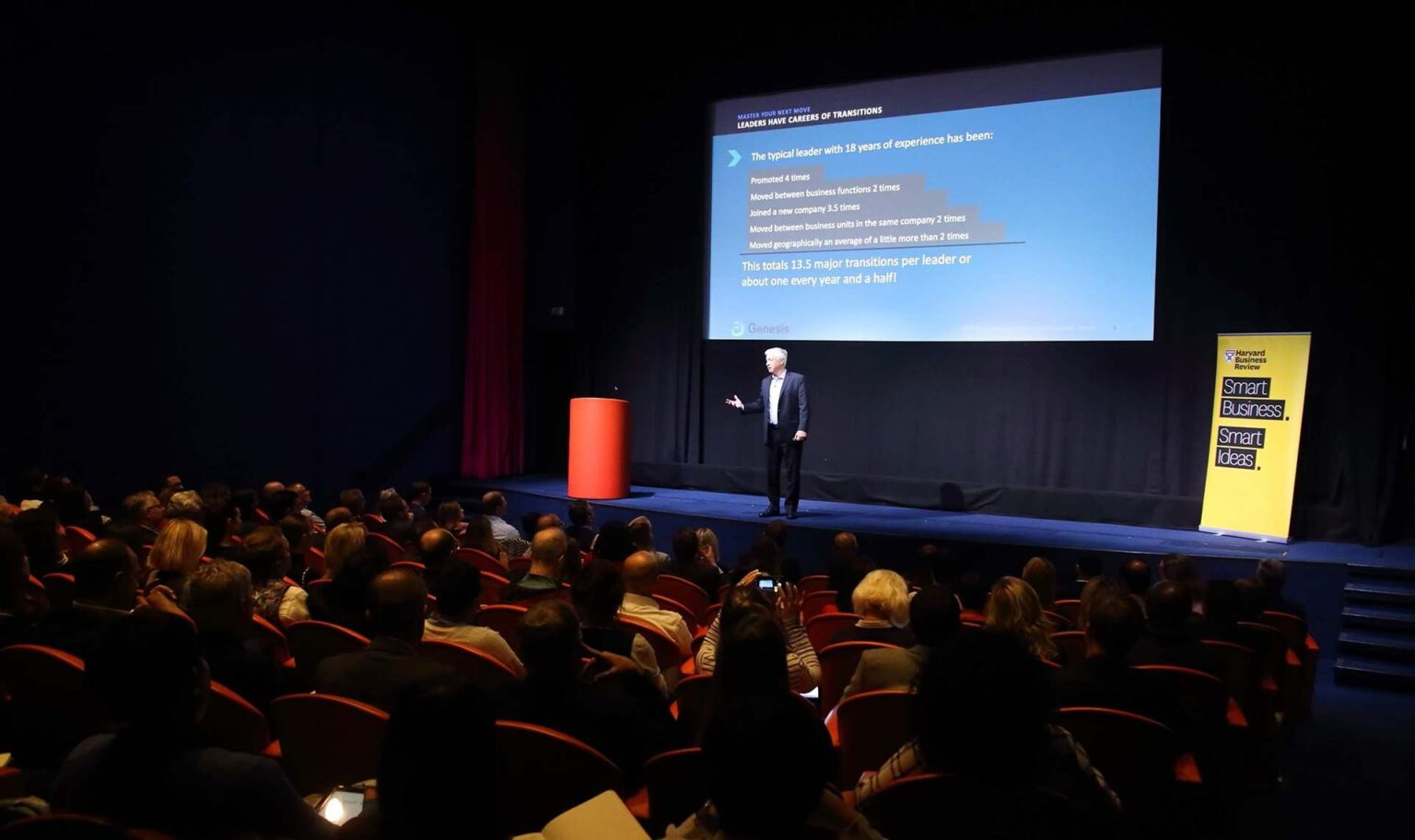In a world where change is a constant, leaders have a career of transitions. According to research by Michael Watkins, author of Master Your Next Move: The Essential Companion to The First 90 Days, a typical leader with 18 years of experience has been promoted four times, moved between business functions twice, joined a new company 3.5 times, moved between business units twice and moved geographically at least twice. That’s a total of 13.5 transitions or approximately one transition every 18 months.
Successfully managing career transitions is an area that warrants investment. It takes six months for a leader to achieve full performance in a new role, but Michael’s research shows that well-structured transition support halves that time. At our event in partnership with Harvard Business Review, Michael explained the eight common transition challenges leaders face, and how to set new leaders up for success during onboarding.

Eight challenges faced by a new leader
During a typical career, a leader is likely to be challenged by eight scenarios: promotion, leading former peers, effective corporate diplomacy, onboarding, international moves, turnaround situations, business realignment and taking on a bigger portfolio. Plus, in addition to the pressure of a new job, the leader is likely to face greater complexity and ambiguity, more intense organisational politics and the feeling of being under extra scrutiny as they take on more senior roles.
Since more than 25% of leaders are onboarded into new roles in a typical year and up to 40% of them leave the organisation within 18 months, successful onboarding has the potential to make a big impact on individuals’ careers as well as commercial organisational success. So, how can new leaders be prepared for their next transition? Here are some key takeaways from our event:

First impressions count
“You don’t even get a first chance to make a first impression, because people who know you have called ahead to speak to the people you’re meeting, so you’re coming in with a reputation” says Michael. The first week of a new leadership role should be all about signalling and intention: “People make judgements about you based on very little data, so what you do early on sends a lot of signals”. New leaders need to focus on what’s happening in the first days, weeks and months in their new role as the first 90 days are critical to future success.
Don’t fall into the classic new leader traps
New leader traps include ‘sticking with what you know’, ‘coming in with the answer’, setting unrealistic expectations and attempting to do too much. These pitfalls can trigger an “organisational immune system attack” says Michael if the new leader creates the impression they think “there is no good here”.
Beware the causes of derailment
Interestingly, none of the causes of derailment are to do with leadership capability. According to Michael’s research the main causes of derailment are a poor grasp of how the organisation works, a misfit with organisational culture and difficulty forging alliances with peers. All of which can be mitigated through effective onboarding.
Match your strategy to the situation
Michael’s STARS model illustrates how leaders need to flex their leadership style based on circumstances. Is the business a start-up? A turnaround? Scaling for accelerated growth, in need of realignment or purely sustaining its success? New leaders need the ability to quickly weigh-up the status-quo.
Every job is a multi-cultural leadership role
“Try first to become part of the place before you try and change it” is Michael’s advice. New leaders need to be equipped to adapt to organisational culture or change it, or both. Leaders will benefit from observing existing behaviours before trying to instigate change – which will be a multi- year process in a large organisation.

Politics are here to stay
“Naively, people think the higher you get the more crystal-clear rationality becomes” but that’s unfortunately not the case. Organisational politics become more intense at senior levels as leaders operate under a higher degree of scrutiny. Be aware too of those that might be watching to see whether you fail.
Shape your team
“Few leaders get to the build their teams. Instead they usually inherit someone else’s team” says Michael. Therefore, new leaders need to be able to quickly assess their team, identify any gaps and have the skill to rapidly align and motivate the ‘inherited’ team around new goals.
A new role for a senior leader will likely involve a combination of the eight challenges Michael explores in his book. Regardless of the challenge, ensuring leaders are well prepared can be achieved through effective onboarding support that enables a new leader to begin a “virtuous cycle” of building supportive alliances, making good decisions and building relationships in order to generate important early wins.





